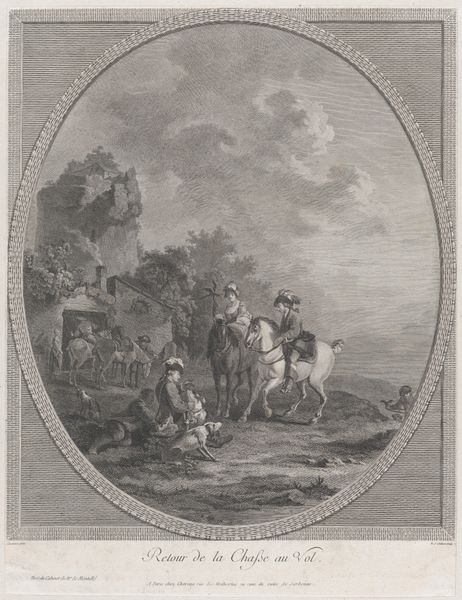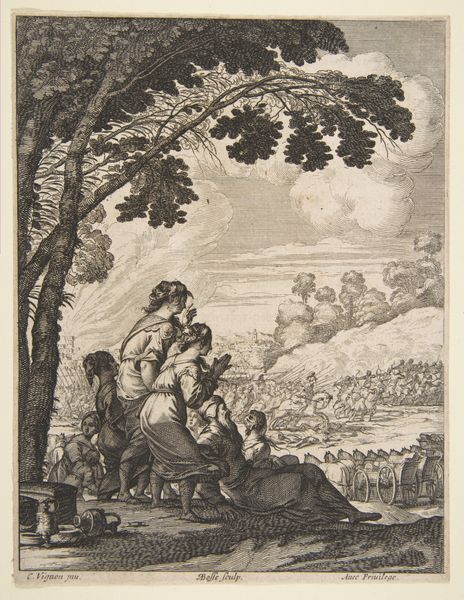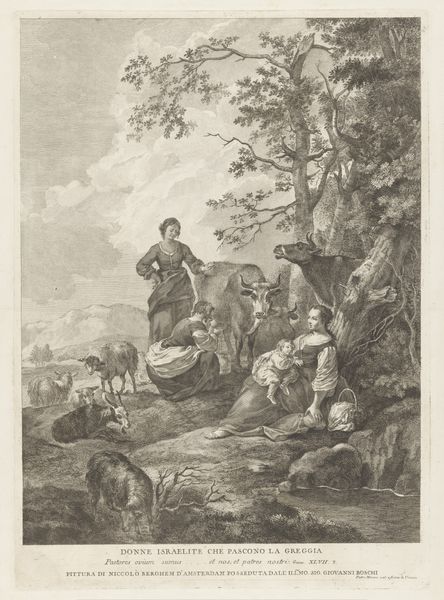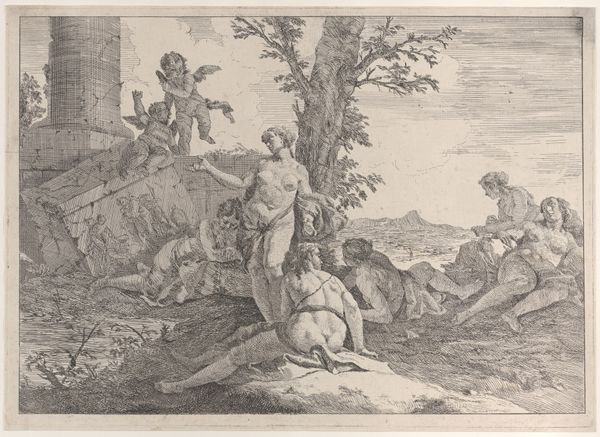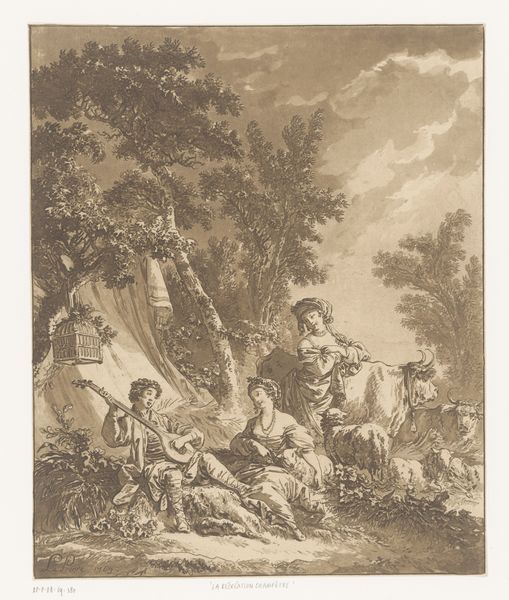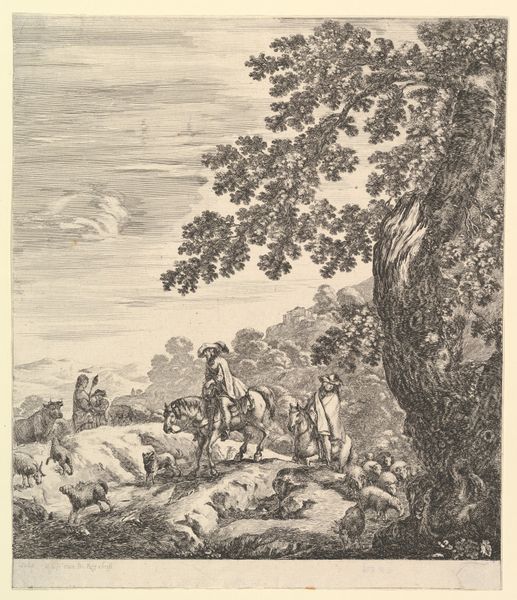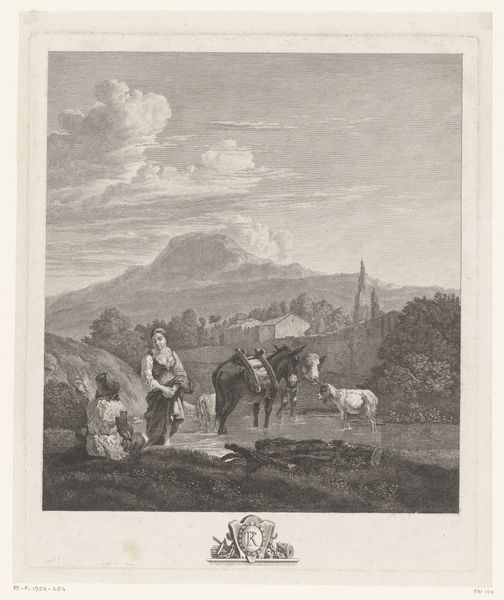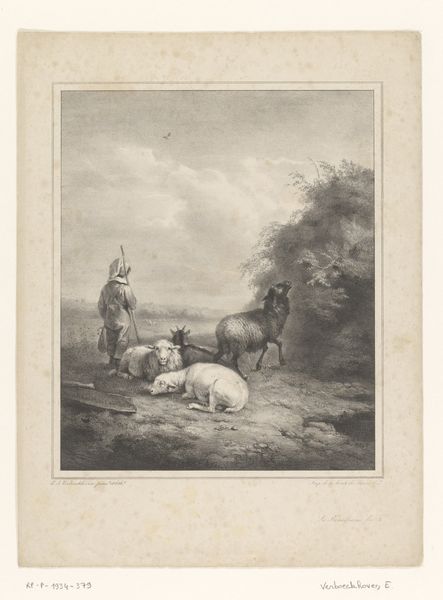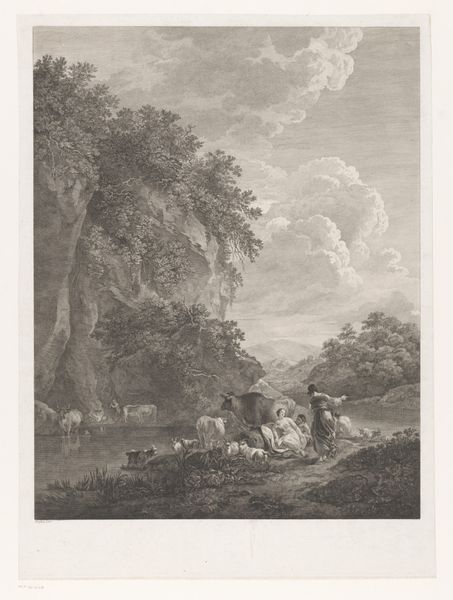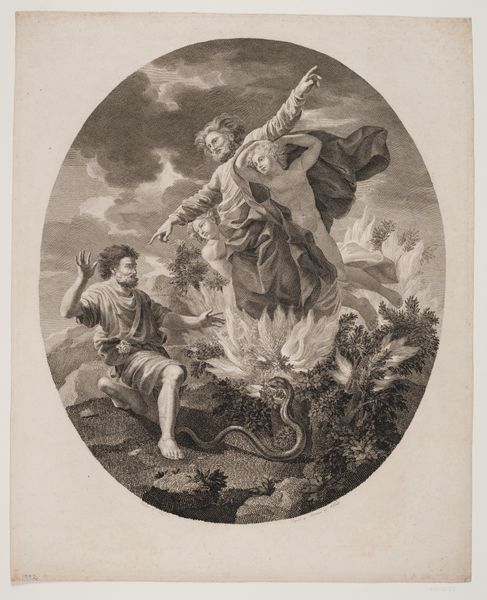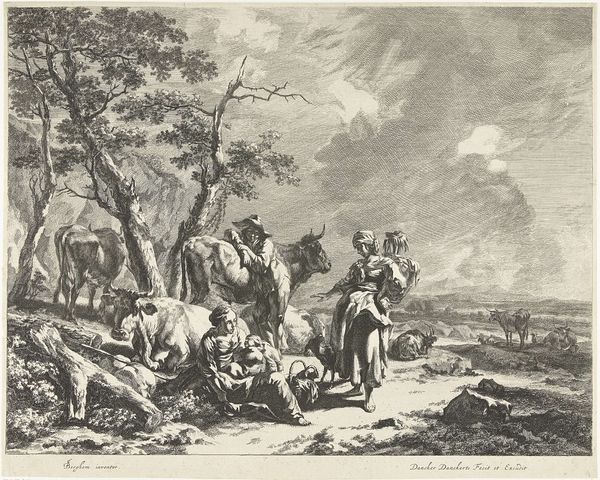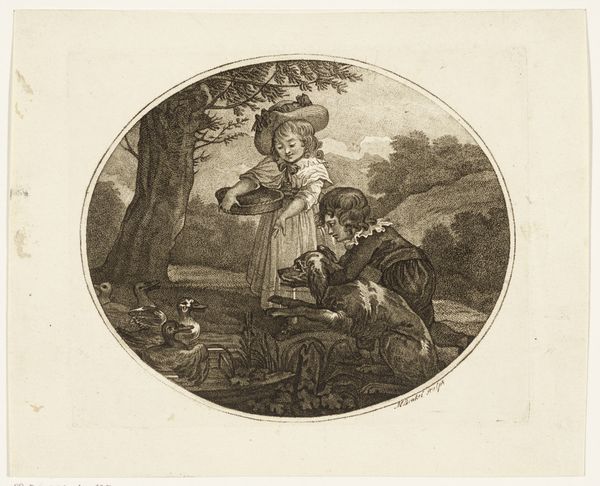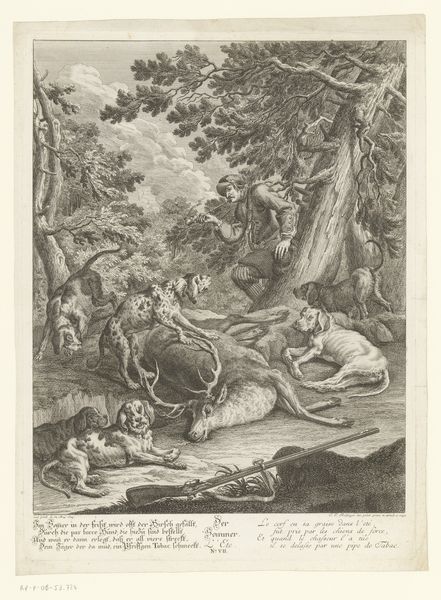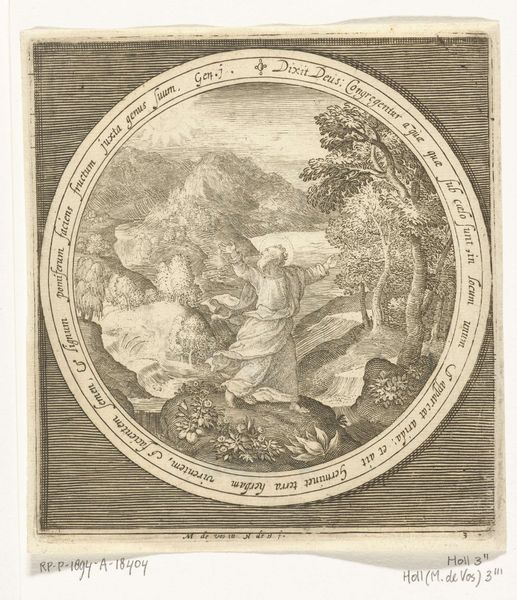
Dimensions: Sheet (trimmed): 16 1/8 × 12 1/16 in. (41 × 30.6 cm)
Copyright: Public Domain
Curator: Let’s consider this compelling etching by Nicolas Colibert from 1781, titled "The Cadaver of a Soldier after Combat." It's currently held at the Metropolitan Museum of Art. Editor: Immediately, I'm struck by the overwhelming sense of loss. The fallen soldier, the slumped horse… there’s a definite stark finality. It’s framed so neatly, like a memorial or a baroque emblem of grief. Curator: The choice of etching as a medium here speaks volumes. It suggests reproducibility, which aligns with its historical purpose: disseminating narratives. Look closely at the detailed lines; the artist skillfully uses them to depict texture. Consider how prints functioned within 18th-century society – easily reproduced and distributed, they played a crucial role in shaping public perception of events. Editor: Absolutely, and it's not just about the 'what,' but also the 'how.' I see the fallen soldier as a symbol of sacrifice, echoing classical tropes of fallen heroes. But the details—the upturned face, the abandoned weapon—humanize the cost of battle. This scene is presented within an oval frame which softens the harsh reality, reminding us of its allegorical dimension, linking the ephemeral nature of human conflict to lasting principles. Curator: What interests me is the labor behind it. Colibert, the engraver, reproduced the images, and those who distribute the art spread particular narratives that glorify conflict while obscuring its grim realities for various economic, political, and social goals. The prints’ accessibility meant a wider audience could ‘own’ their piece of the glory…or the horror, depending on how you interpret the image. Editor: Yes, it is the duality inherent in visual symbols! Consider the riders in the background: are they victors, witnesses, or simply part of the sweeping inevitability of war? Each figure adds to the complex story, inviting ongoing reflection. I am particularly interested in the almost allegorical figure removing garments of the cadaver as if it is a fallen effigy and this moment memorializes an historical tragedy Curator: Very insightful. It brings us back to considering the etching as a commodity itself. Was the engraving’s commercial aim to appeal to notions of patriotism, to generate discussion about ethical dilemmas regarding the cost of armed conflict, or simply record historical incidents for future research? And how might this object also question notions of high art with these many intended purposes for consumption by society? Editor: Indeed, these layers invite contemplation. “The Cadaver of a Soldier After Combat” isn’t just an artwork, it's a symbolic snapshot of a moment suspended between historical documentation and enduring human struggle. Curator: Agreed, considering its production and consumption context alongside its visual impact significantly enriches our understanding.
Comments
No comments
Be the first to comment and join the conversation on the ultimate creative platform.
